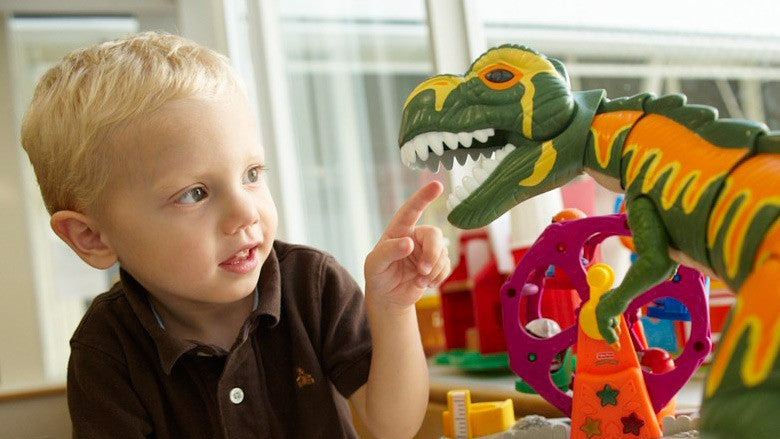
Tips For Toys
Share
Whether it’s choosing balanced meals or helping with homework, every parent feels instinctually empowered to keep their children safe and happy. One of the most impactful, yet least emphasized areas of parenting is play time. Alongside making healthy choices and math problems, parents have an obligation to choose toys conscientiously and encourage creativity through play.
Children tend to remember lessons they learn while having fun and rely on their parents to set good examples for proper use and maintenance of toys. Remember, supporting creativity at a young age can significantly affect creativity, self-esteem, and adaptability as adults.
Below are 5 easy tips for picking toys:
1. Make sure the toy complies with the federal toy safety standard. The toy safety standard refers to ASTM F963 a must for all toys intended for use by children under 14 years of age. The ASTM F963 standards incorporate relevant safety measures already required under federal law and include additional guidelines and test methods to prevent injuries from choking, sharp edges and other potential hazards. In addition to requiring toy safety standards, the law sets strict limits on lead content in children’s product and all toys need to be phthalate free (not exceeding 0.1%).asdf
2. Buy toys in consensus with the suggested age range. Don’t expect a toddler to benefit from a toy intended for an adolescent. All toys’ packaging include age-relevant information, and buying advanced-age toys for children won’t make them smarter. Many toys intended for older age groups contain small and potentially hazardous pieces that could harm younger children, thus parents should buy toys in accordance with the physical and mental capacity of their children by following the guidelines marked on the packaging.
3. Size matters. Until your child turns 3, toy parts should be bigger than his mouth to prevent the possibility of choking. To determine whether a toy poses a choking risk, try fitting it through a small object choking tester. If a toy or part of a toy can fit inside the cylinder, it’s not safe.
4. Supervision is essential to creating safe, hazard-free play environments both indoors and outdoors. Children aren’t always delicate with their toys, so parents should regularly conduct a toy maintenance check for safety and durability.
5. Check for toy recalls. You can check the Consumer Product Safety Commission‘s website for anything that has been deemed hazardous to children. This can help you with your purchasing decisions and to determine if something you already own is not safe.
